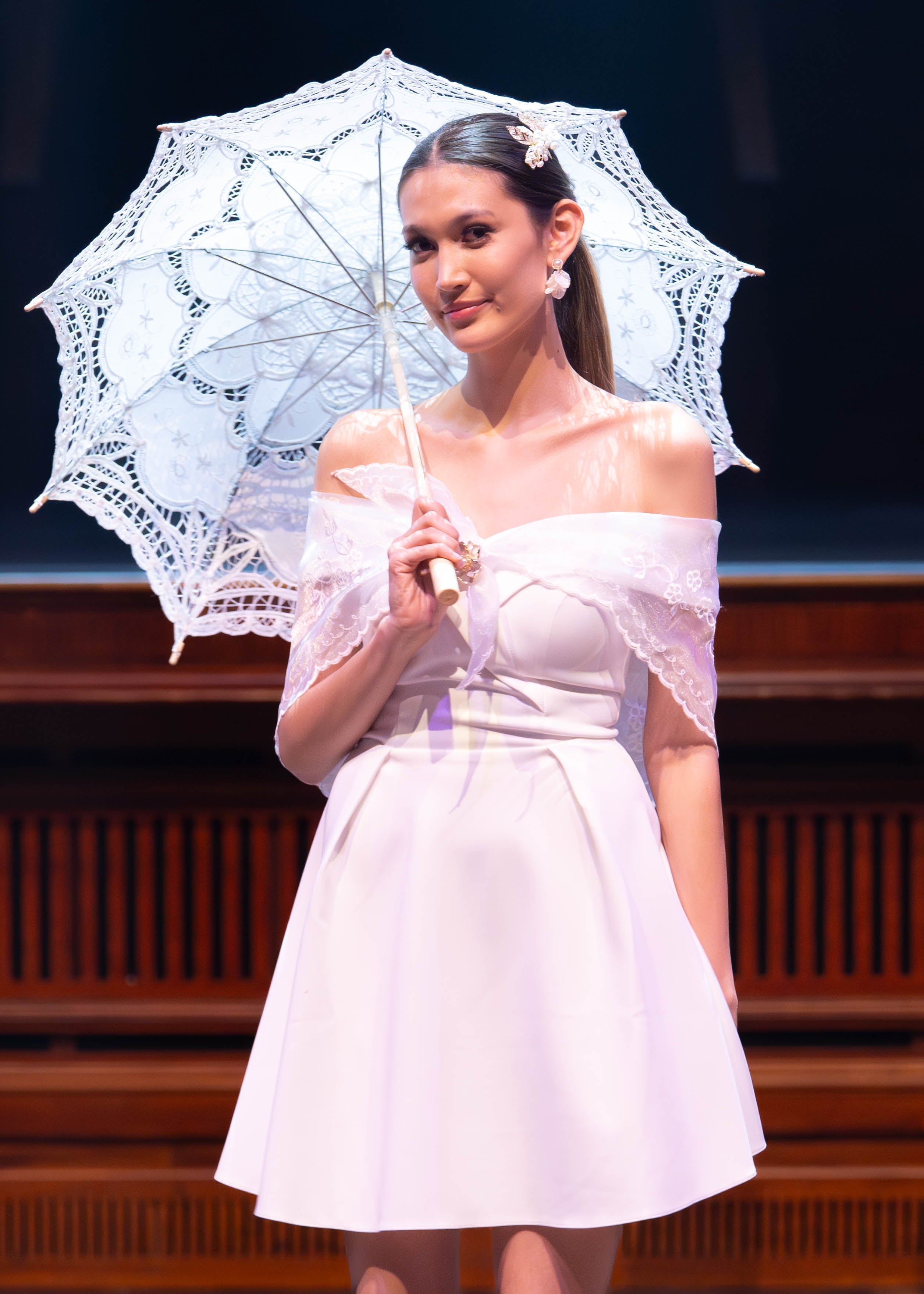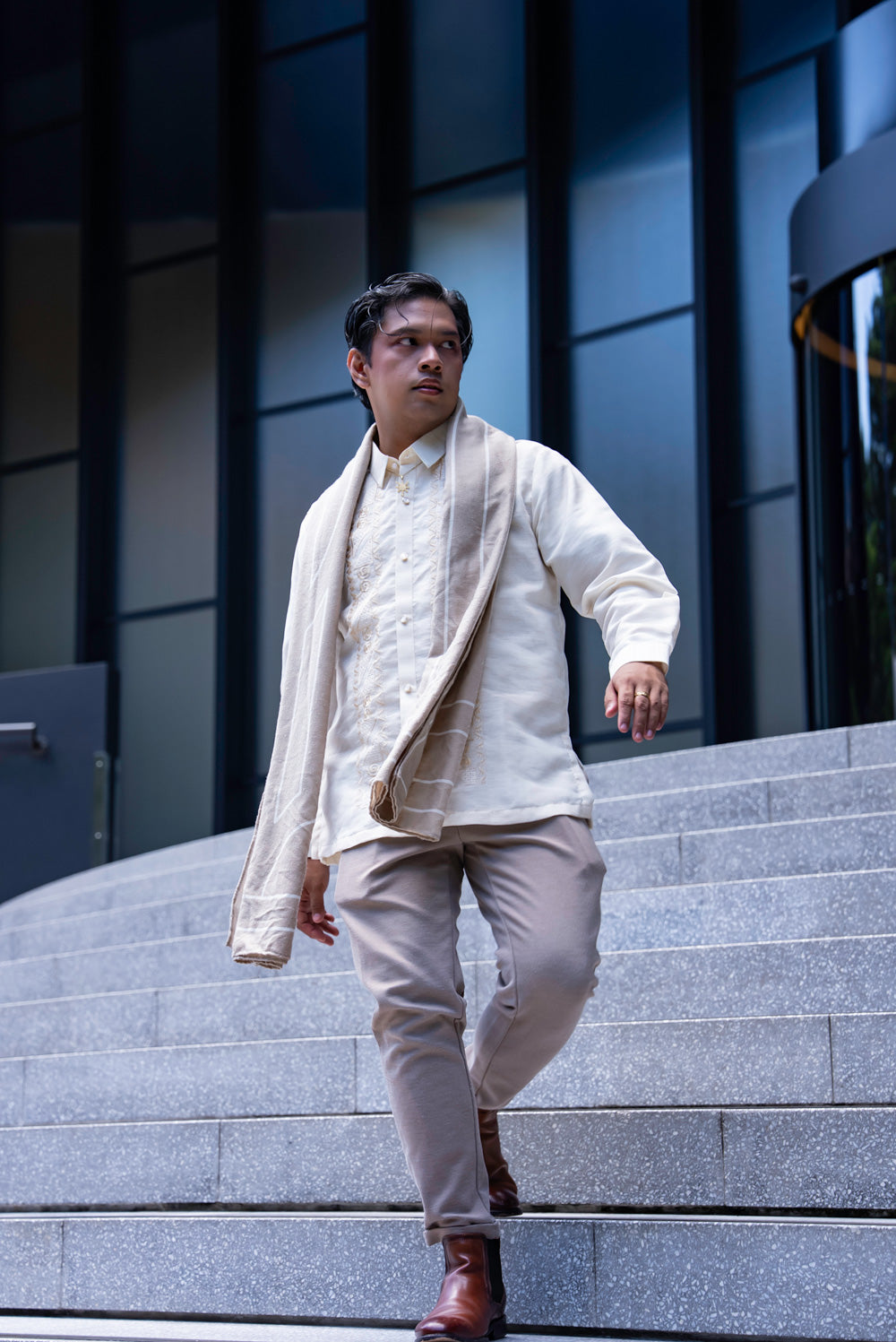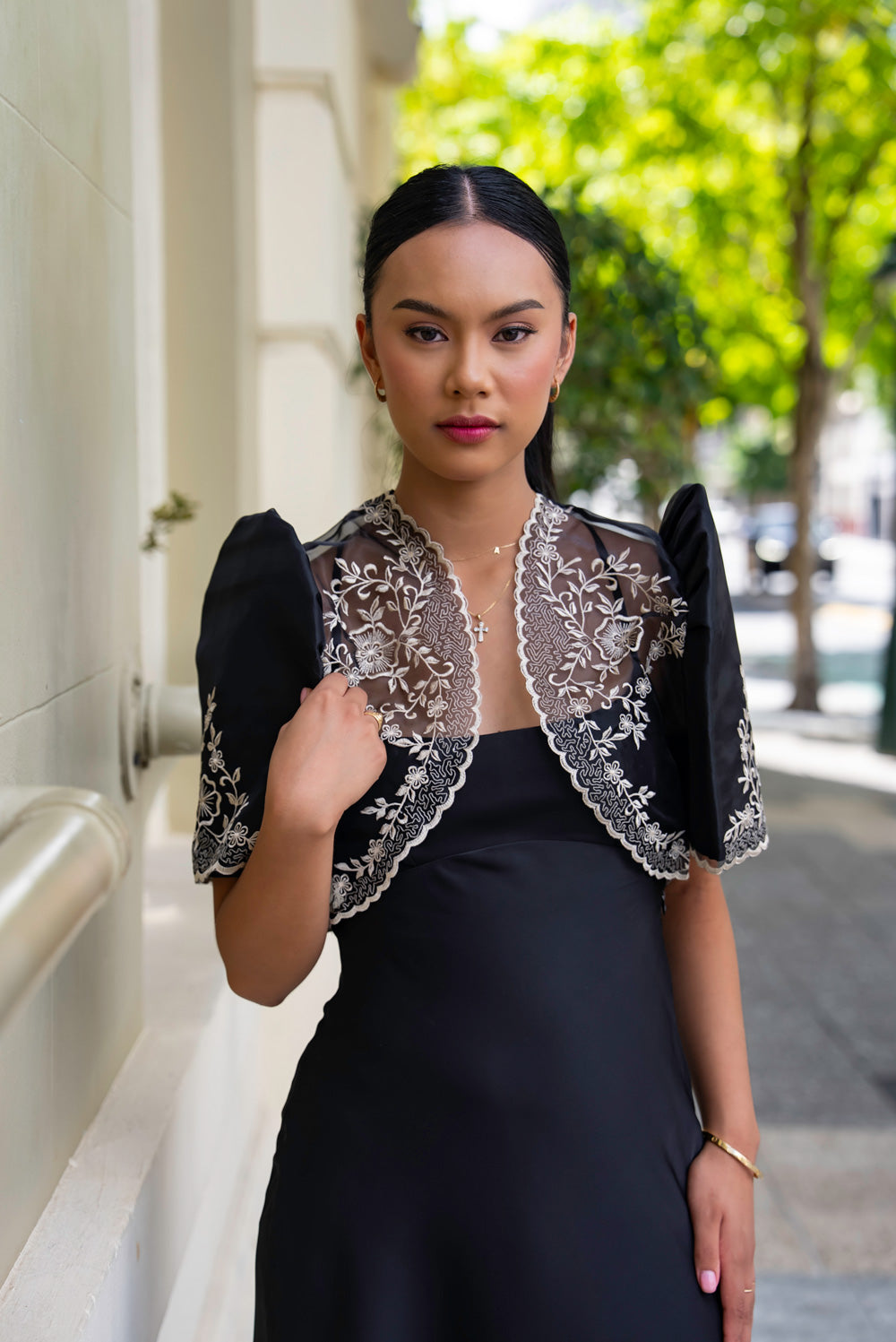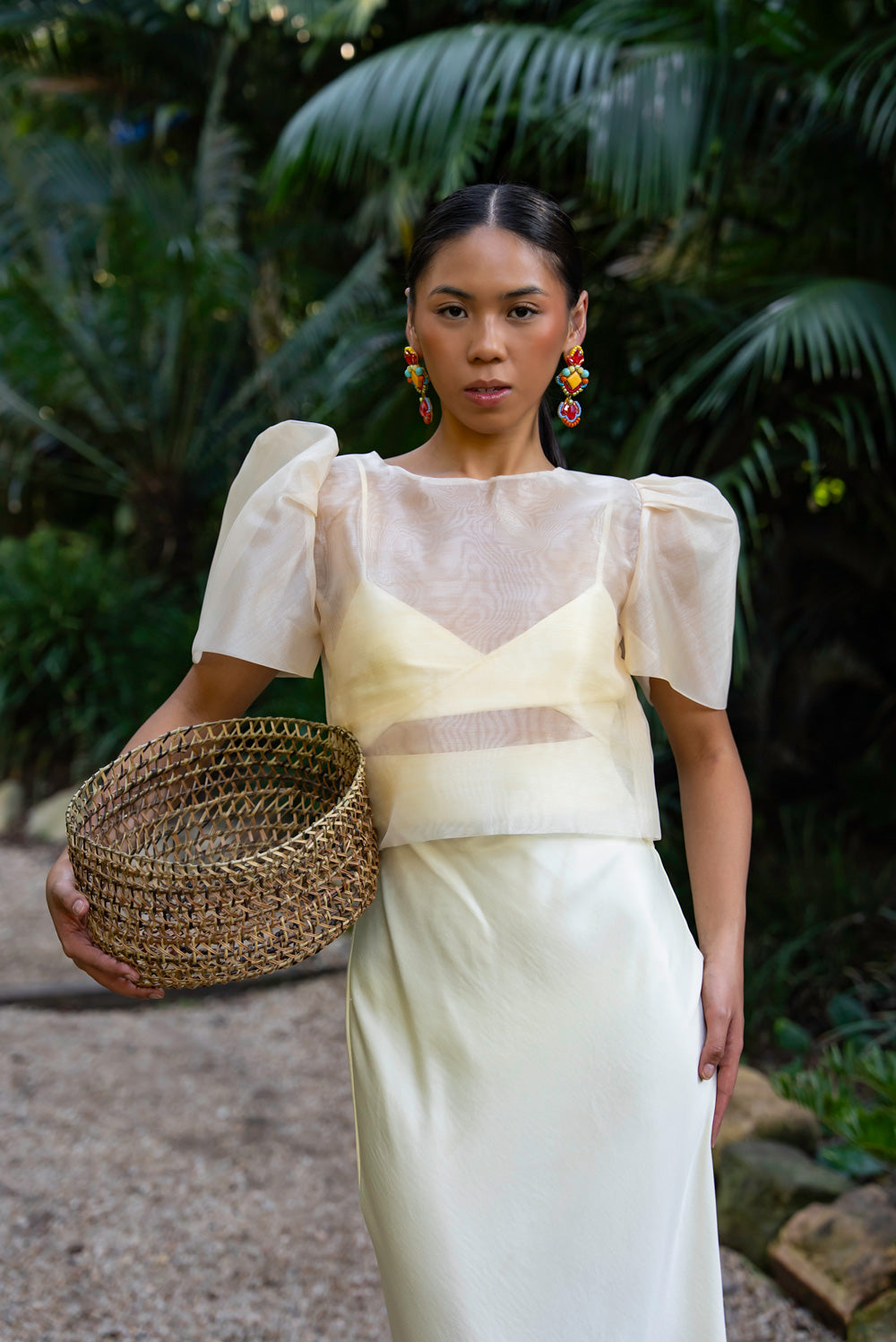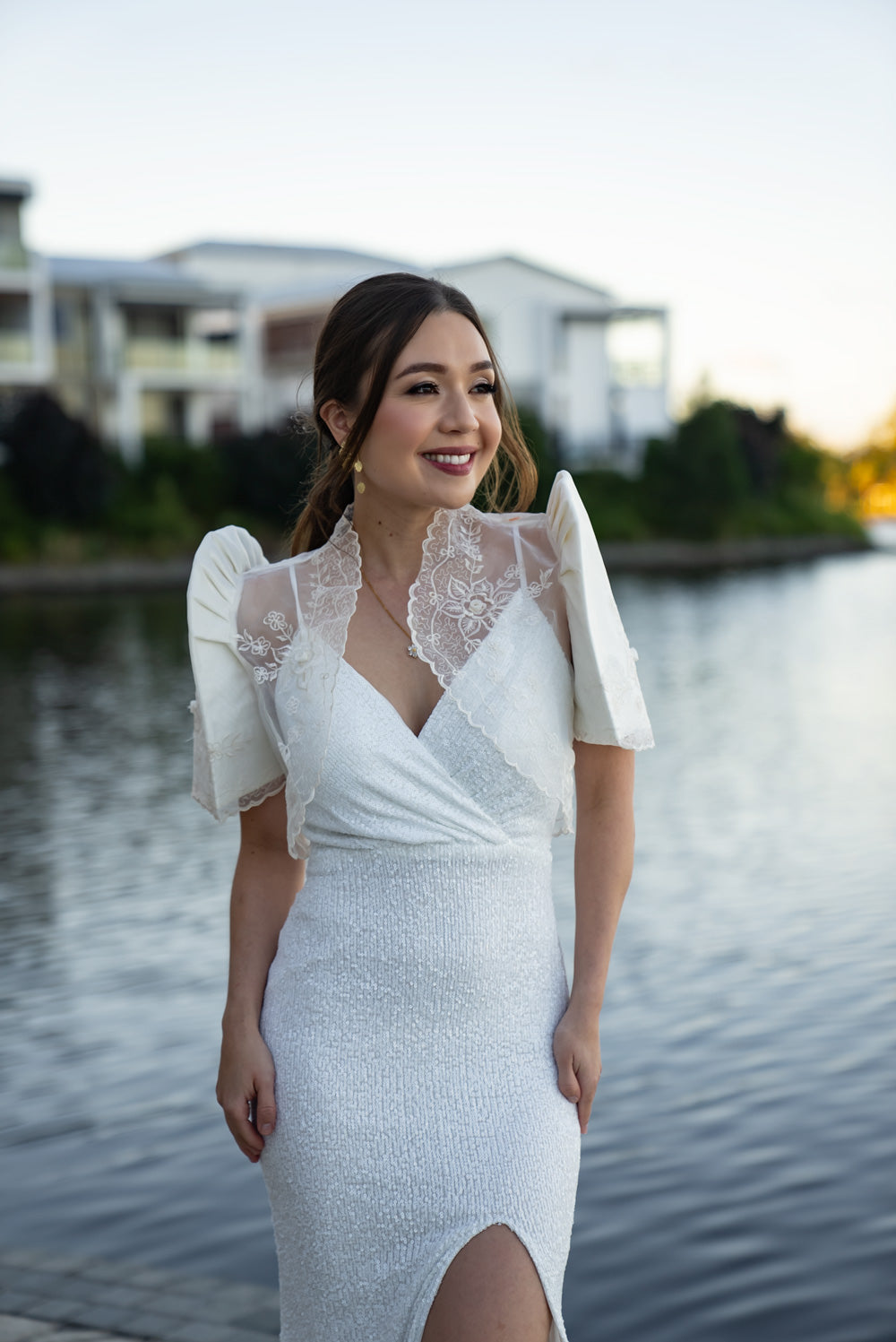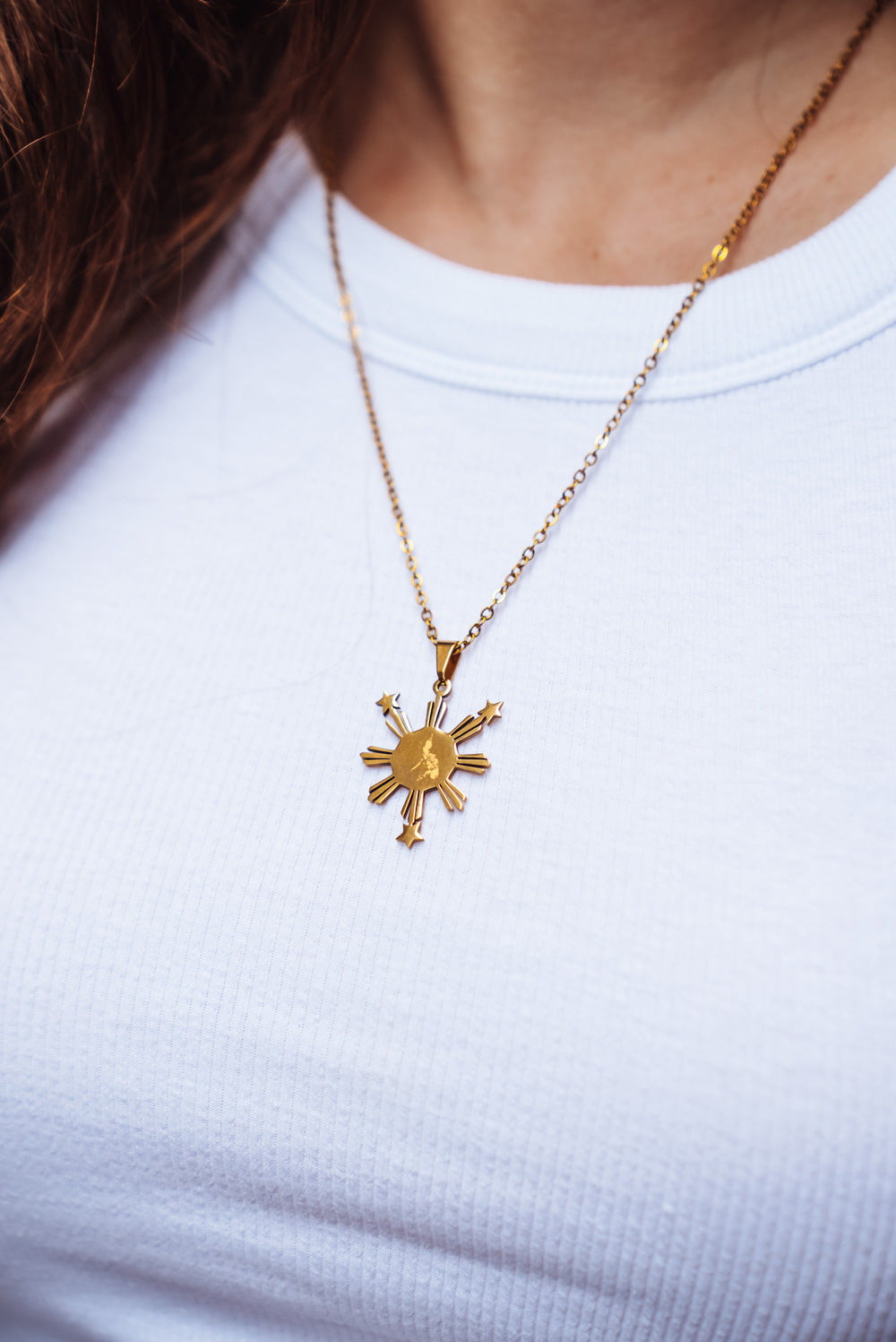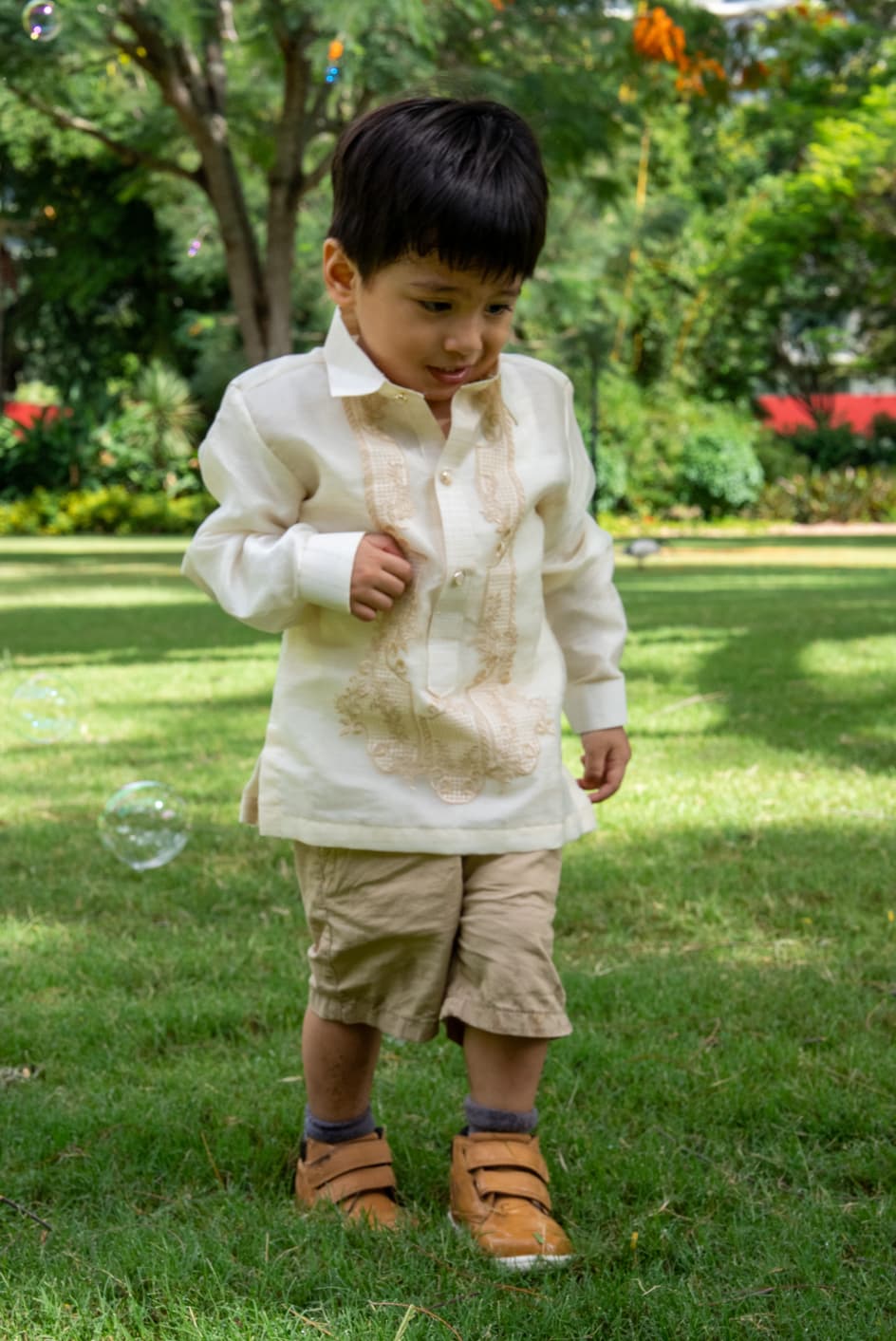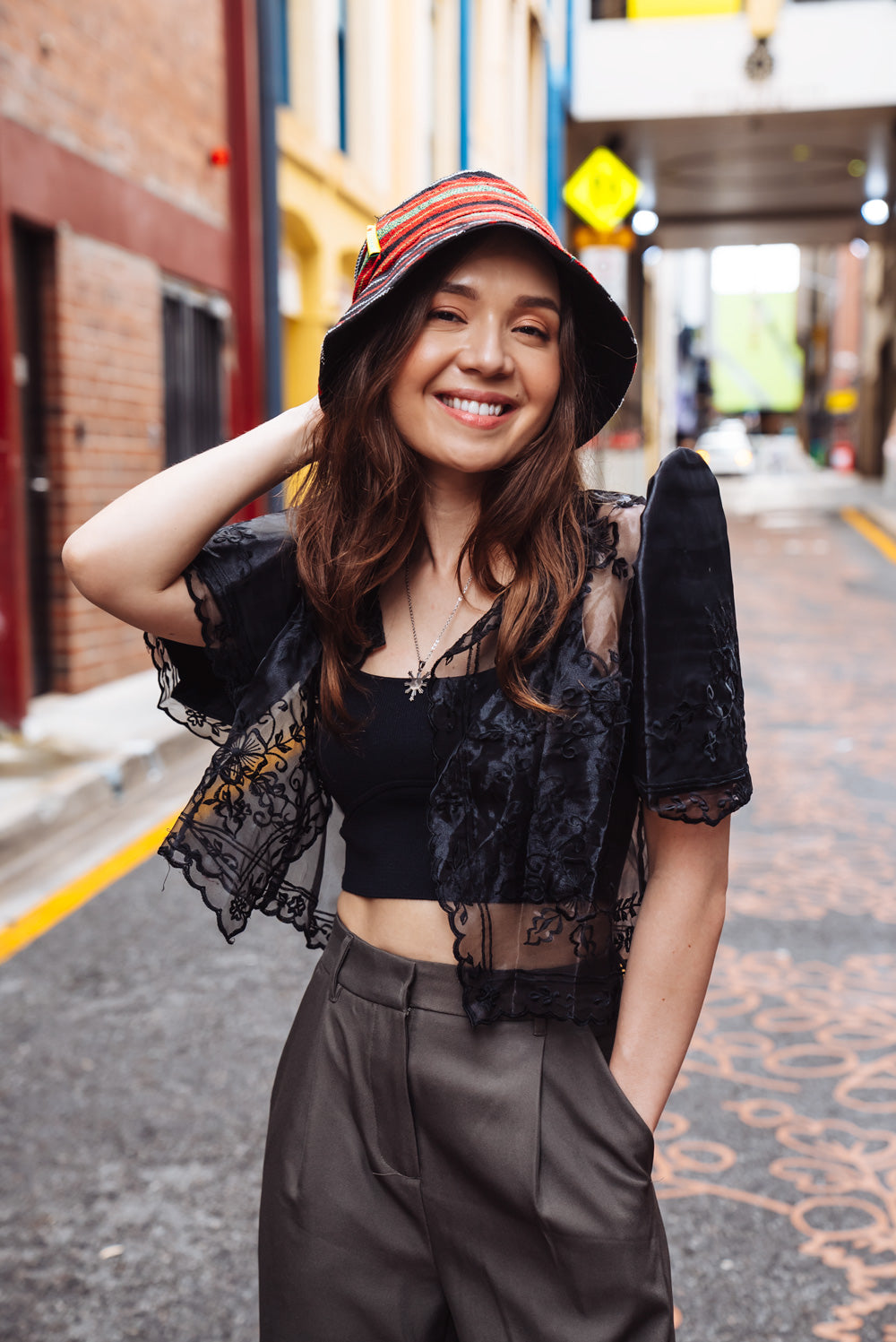The Barong Tagalog has long been a traditional clothing staple for Filipino men for centuries. It is a lightweight, embroidered shirt, usually made of jusi or piña fabric, which is worn untucked over a plain white undershirt. The barong is usually made with a collar and has long loose sleeves.
Traditionally, the Barong Tagalog was only seen in white, but nowadays, it is available in a variety of colours and designs. The Barong Tagalog is also often given as a gift to mark special occasions such as weddings, anniversaries, and birthdays.
The Iconic Symbol of Filipino Identity
The Barong Tagalog is deeply rooted in Filipino culture and has had a major influence on Filipino fashion over the years. It has become an iconic symbol of Filipino identity and is often seen as a representation of the country’s cultural pride. It is also often thought to represent grace, elegance, and respect, and it is a symbol of Filipino heritage.
The Barong Tagalog is so deeply embedded in Filipino culture that it is even featured in the national anthem. This type of clothing has also been worn by some of the most prominent figures in Philippine history, including Ferdinand Marcos and Manuel Quezon.
The Barong Tagalog is also known for its intricate embroidery, which is often done by hand. This type of embroidery is usually done in two different colours and can include intricate patterns, such as flowers, leaves, and geometric shapes. The intricate embroidery is a representation of the importance of craftsmanship and artistry in Filipino culture.
The traditional Barong Tagalog is often made with a linen material, which is lightweight and comfortable. The lightweight material also makes it easy to wear in the hot and humid climate of the Philippines. The traditional garment is often paired with a traditional Filipino skirt, known as a traje de mestiza, which is a long, loose skirt that is typically made of white or light-coloured cotton.
The traditional Barong Tagalog is also a popular choice for formal occasions, such as weddings, baptisms, and other important events. It is often worn with a white undershirt and a traditional Filipino hat known as a salakot.
The Evolution of Barong Tagalog
The traditional Barong Tagalog has evolved into modern fashion in recent years. Designers have taken inspiration from the classic style of the Barong Tagalog to create contemporary pieces with a modern twist. Designers have incorporated elements of the Barong Tagalog into their collections, such as the use of intricate embroidery, colourful fabrics, and unique details.
The modern design of the Barong Tagalog has also influenced the way it is worn. It is now often seen paired with jeans and chinos, giving it a more casual look, or modern pieces, such as jackets and trousers, for a more contemporary look.
The traditional Barong Tagalog has also been embraced by the younger generations as a fashion statement. Many young people today are taking inspiration from the classic design of the Barong Tagalog and incorporating it into their own personal style.
Conclusion
The influence of the traditional Barong Tagalog on Filipino fashion is undeniable. It has become a symbol of Filipino pride and identity, while also serving as a source of inspiration for modern fashion designers. The Barong Tagalog continues to be an important part of Filipino culture, and its influence on fashion will continue to be felt for years to come.
Are you looking for a stylish barong tagalog to wear on a special occasion? Look no further than Mestiza Filipina, an online store that offers a wide selection of modern Filipino attire. From barong tagalogs to boleros and more, Mestiza Filipina has something for everyone. Shop our collection today and find the perfect barong tagalog to complete your look!


